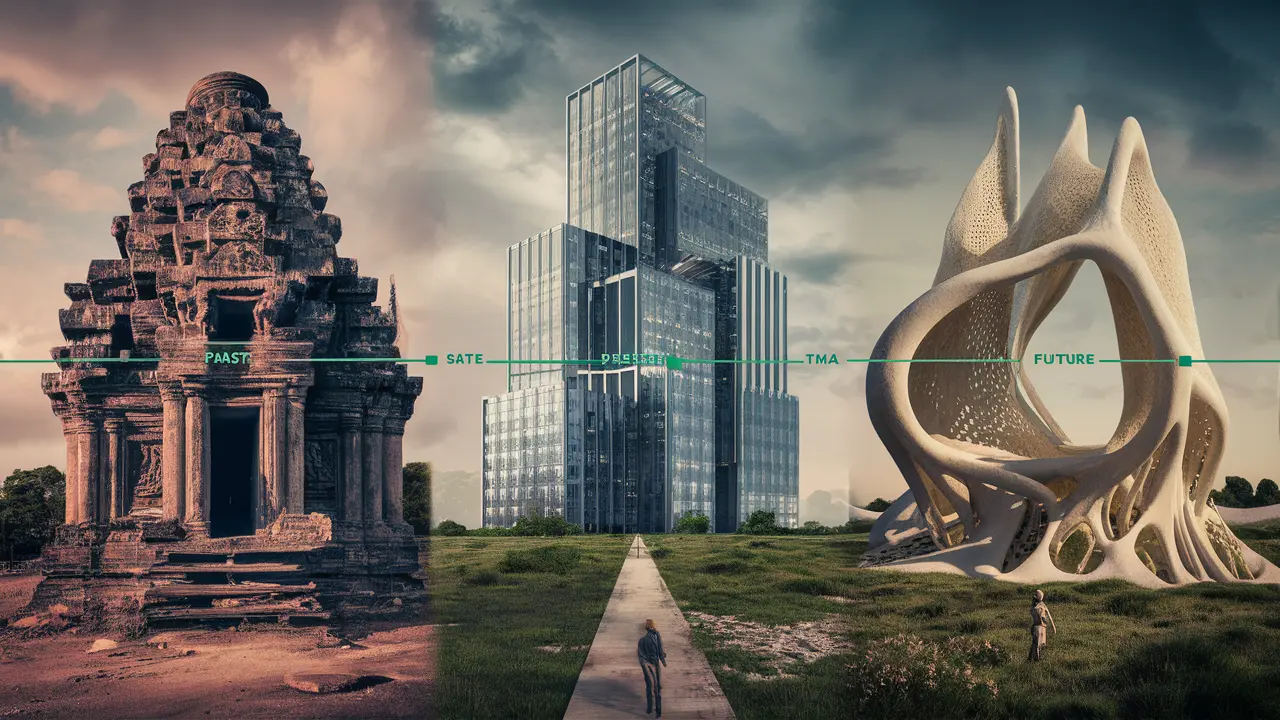The evolution of architecture spans millennia, reflecting changes in culture, technology, materials, and societal needs. Here’s a breakdown of architecture’s progression from the past to the present and into the future:
Past:
-
Ancient Civilizations (3000 BCE – 500 CE):
- Egyptian Architecture: Known for monumental structures like the pyramids and temples, characterized by massive stone construction and hieroglyphic decorations.
- Greek Architecture: Introduced the orders (Doric, Ionic, Corinthian) and emphasized symmetry, proportion, and the use of columns and pediments.
- Roman Architecture: Expanded on Greek principles with innovations in arches, vaults, and domes; built amphitheaters, aqueducts, and basilicas.
-
Medieval Architecture (500 – 1500 CE):
- Romanesque Architecture: Thick walls, round arches, and barrel vaults, seen in churches and castles across Europe.
- Gothic Architecture: Pointed arches, ribbed vaults, and flying buttresses enabled taller, lighter structures like cathedrals, emphasizing verticality and light.
-
Renaissance and Baroque (15th – 18th century CE):
- Renaissance: Revival of classical forms with symmetry, domes, and harmonious proportions; prominent in Italy and later spreading across Europe.
- Baroque: Dramatic, ornate, and dynamic designs with elaborate decorations, exemplified in churches, palaces, and public buildings.
Present:
-
Modernism (late 19th – mid 20th century):
- Industrial Revolution: Steel, glass, and reinforced concrete enabled new forms and structures; functionalism and minimalism emphasized.
- Bauhaus: Influenced by the German school’s focus on functionality, simplicity, and mass production, shaping the International Style.
- Art Deco: Elegant, streamlined designs with geometric patterns and lavish materials, seen in skyscrapers, theaters, and interiors.
-
Postmodernism (late 20th century):
- Rejection of Modernism: Embraced eclecticism, historicism, and contextualism; combined diverse elements and styles, focusing on symbolism and irony.
- Deconstructivism: Fragmented forms and unconventional geometries, challenging traditional perceptions of space and structure.
Future:
-
Sustainability and Technology:
- Green Architecture: Focus on energy efficiency, renewable materials, and ecological design principles to mitigate environmental impact.
- Parametric Design and Digital Fabrication: Computer-aided design tools allowing complex geometries, customized forms, and efficient construction techniques.
-
Responsive and Adaptive Architecture:
- Smart Cities: Integration of IoT (Internet of Things) and AI (Artificial Intelligence) for responsive buildings and urban environments.
- Adaptive Reuse: Transforming existing structures for new purposes, promoting sustainability and preserving cultural heritage.
-
Cultural Diversity and Inclusivity:
- Global Influences: Incorporation of diverse cultural elements and local traditions, fostering inclusivity and reflecting multicultural societies.
- Social Impact: Designing spaces that enhance well-being, promote community engagement, and address social equity and accessibility.
The future of architecture will likely continue to evolve in response to global challenges such as climate change, urbanization, and technological advancements. Architects will increasingly prioritize sustainable practices, resilience, and human-centered design, shaping cities and environments that are more responsive, inclusive, and adaptable to future needs.

